
Privacy statement: Your privacy is very important to Us. Our company promises not to disclose your personal information to any external company with out your explicit permission.
PEEK replaces metal and is first used in Mercedes-Benz gearbox gears
High-performance plastics such as Polyetheretherketone (PEEK) offer many useful opportunities for gear improvement. PEEK gears are used for the first time in Mercedes-Benz gearboxes.
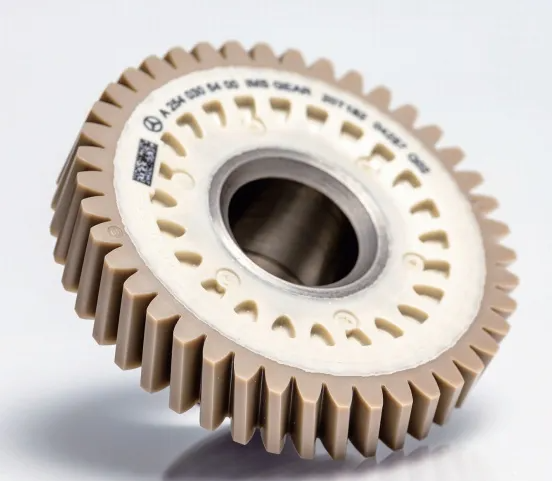
Mass balancer gears made of Vestakeep 5000 G are the first plastic gears to be used in Mercedes-Benz transmissions. It replaces the previously used metal gear
Plastic gears are gradually replacing traditional metal gears in numerous technical applications because they are lighter, quieter, have good dry-running properties, have low friction and wear, and can be manufactured efficiently. Products made of high-performance plastics such as polyetheretherketone (PEEK) are generally more stable mechanically, thermally and chemically than gears made of engineering plastics and thus enable extended load limit values. An important prerequisite for this is conformity assessment and suitable component design for the type of plastic.
In 2018, a Competence Center for Tribology was founded in Darmstadt, Germany, for the development of high-performance plastics for the production of components subject to frictional stress, such as: PEEK, polyamide 12 (PA12) and Polyimide (PI ). In addition to conventional methods such as pin-on-disk and ball-on-disk tests (via mini tractors), they installed a new type of test rig (Fig. 1).
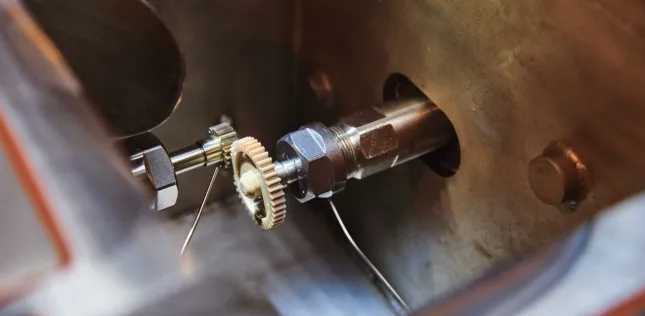
Figure 1: The Tribology Competence Center in Darmstadt, Germany, has installed a gear test rig for testing plastic gears: it enables gear design by determining component-specific characteristic values
Test bench for evaluation of plastic gears
The friction and wear behavior of gears is complex and depends on the specific local stresses in contact with the steel pinion and the environmental conditions during operation. To date, neither model tests such as pin-on-disc tests nor traditional combinations of static and dynamic mechanical tests on standard specimens have been able to adequately evaluate the behavior of plastic gears in operation due to the special meshing conditions of the gears. Instead, component-specific characteristic values for design can be determined on plastic gears in component tests on the new gear test rig. Dynamic friction and mechanical alternating loads are applied through the metal driven pinion to the plastic gear teeth under defined torque load, speed and temperature conditions. Plastic gears lubricated with oil or grease etc. can be compared to dry running plastic gears.
The test is carried out according to the German VDI 2736-4 standard ("Thermoplastic gears: Determination of gear load capacity characteristics") to determine the tooth load capacity and wear coefficient of different load sets. These results are used as raw data in professional gear design simulation programs to help customers optimize designs. Testing typically continues until the gear fails due to flank wear or tooth root fracture. Tooth root temperature affects the load variation it can withstand, so it can be measured and controlled with infrared (IR) sensors on existing test stands.
Convincing mechanical properties and chemical resistance of PEEK
When developing high-performance polymers for gears, the different mechanical, thermal and tribological requirements should be harmonized as much as possible according to the stresses involved. Certain material modifications can adversely affect gear performance. For example, additives that are sometimes used to improve anti-wear properties or reduce friction can negatively affect the dynamic mechanical behavior of a gear (depending on particle characteristics and its adhesion to the plastic matrix) if they become the source of defects or cracks possibility).
Compared with engineering plastics such as polyoxymethylene (POM), Pa6 and Pa66, the high-performance plastic PEEK has many advantages when used as a gear material. In particular, it can also transfer high loads at high temperatures. Due to its negligible water absorption and low shrinkage and post-shrinkage, molded parts are dimensionally stable, and based on the molecular structure of thermoplastic materials, it is also extremely chemically resistant. These properties are especially important when gears are lubricated with motor oil or transmission fluid, which is a corrosive environment for many plastics.
Storage in oil remains unchanged
Taking the elongation rate after full contact storage in gear oil as an example (Figure 2), we can see that PEEK (brand: Evonik Vestakeep 4000 G) is better than polyphthalamide (PPA, brand: Vestamid HTplus, Win The more durable model) is a partially aromatic polyamide with high temperature stability. The elongation at yield of PEEK did not change, but the elongation at break of PPA decreased significantly after storage for 500 hours. The brittle characteristics of PEEK are reflected in the elongation at yield, while PPA is reflected in the elongation at break due to the lack of elongation at yield. Additional impact strength tests further demonstrate its mechanical embrittlement behaviour.
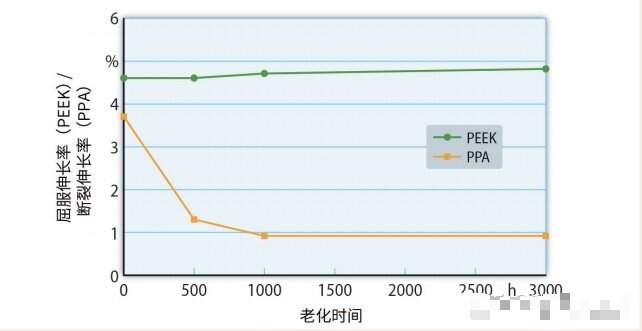
Figure 2: Yield elongation of PEEK and break elongation of PPA after full contact storage in gear oil at 150°C: The elongation of PPA decreases substantially in a short time, while the elongation of PEEK rate remains the same.
Compared with other engineering plastics, PEEK's extremely high mechanical and thermal stability has made it successful in gear applications. This is illustrated by testing gears made of high molecular weight ductile PEEK under dry and oil-lubricated conditions at 80°C and 130°C, respectively, using the described test rig (Fig. 3). The plastic gear is driven at 650rpm by a pinion with a specific surface hardness and roughness. The result is that oil-lubricated PEEK can transmit extremely high loads over an extremely long service life. Under dry-running conditions, gears typically fail due to flank wear, while under oil-lubricated conditions, gears typically fail due to fatigue-induced root fracture.
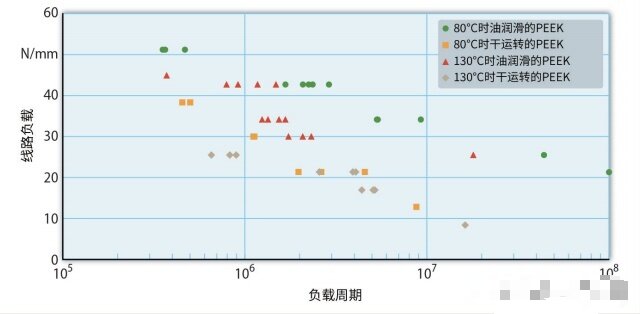
Figure 3: Mechanical testing of gears made of Vestakeep 5000 G: Oil-lubricated PEEK gears can transmit higher loads over multiple cycles
Reduce friction with PEEK
Additional advantages of PEEK include excellent tribological and wear properties, especially low wear and coefficient of friction. The latter ensures energy savings whether running dry or lubricated. This was confirmed in another experiment (Fig. 4). Friction coefficients of steel-steel and PEEK-steel combinations in ball-on-disk tests in engine oil at 23°C and 130°C by passing a steel ball with a radius of 9.5 mm and a steel disc and a PEEK circle disk was studied. During the experiment, the steel ball was loaded with 30N and operated with a slide-roll ratio of 25%, which can be used to test the slide-roll motion of two material combinations.
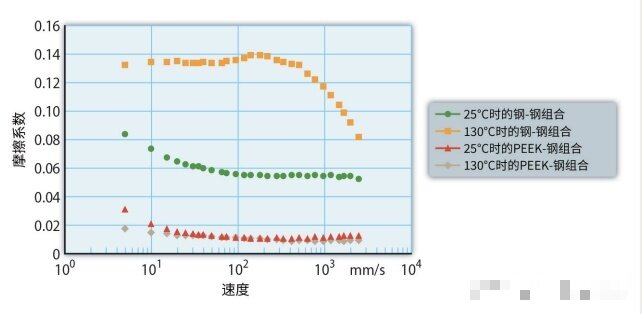
Fig. 4: Friction coefficients of steel-steel and PEEK-steel combinations in motor oils: the coefficients are significantly lower with the use of the high-performance plastic Vestakeep 5000 G
The so-called Stribeck curve shows that the use of PEEK-steel combinations in oil-lubricated systems enables extremely energy-efficient solutions. The coefficient of friction of the steel-steel combination is increased to The original 4-7 times. This can be explained by the viscoelastic behavior of PEEK and the resulting lower Hertzian pressure between the contact surfaces.
The viscoelastic behavior and good damping effect of PEEK are also reasons for its pleasant noise characteristics. With the elimination of internal combustion engine noise, silent transmissions are becoming more and more important, especially for electric vehicles. In grease-lubricated helical gear units, the PEEK-steel combination significantly reduces airborne noise, in some cases by more than 10dB (Fig. 5). The measurements were carried out at the Industrial and Automotive Drive Technology Cooperation Platform (IFA) at the Faculty of Mechanical Engineering at Ruhr-University Bochum, Germany.

Figure 5: Airborne noise measurements of grease-lubricated PEEK-steel and steel-steel combinations in a helical gear unit at 3000 rpm: by utilizing PEEK, the noise level was even reduced by more than 10 dB in some cases
Mercedes-Benz: Plastic instead of metal
The advantages described above allow the series application of PEEK gears in mass balancer transmissions from Mercedes-Benz (header image). This is the first PEEK plastic gear used in this challenging engine application, replacing previously dedicated metal gears. After a series of tests and evaluations by manufacturing partners, PEEK is ready for use in this harsh environment. The gears are manufactured by injection molding, which is cost-effective and precise, and does not require extensive post-processing as was previously the case with metal. In addition, the lower mass moment of inertia during driving saves energy and enables smooth running and low-noise behavior.
Summary and Outlook
From traditional automotive engineering to robotics to drones, the potential applications for plastic gears are extremely diverse. High-performance plastics such as PEEK expand the use of plastic gears in transmissions to higher torque, speed and temperature ranges. To achieve this, they must be designed with plastics in mind so that they can be used in smaller, lighter and more energy-efficient devices. These excellent properties will promote the application of PEEK gears in electric vehicles and further replace metal gears. 3D printing will help in this case. It will also open up new application possibilities. The application of more hybrid solutions and the integration of additional functions such as cooling and lubrication channels also brings more options.
All in all, complex multi-component injection molding technology brings enormous design freedom to gear design. This makes it possible to use products made of wear-optimized plastics in the tooth flank area, hardness-modified plastics in the tooth root area, metal or highly stressed fiber-reinforced plastics in the area around the load peak, etc. They enable cost-effective and precise production, e.g. via rotary moulds. In addition, PEEK-based smart material products enable the design of tribological systems without external lubricants in an energy-efficient and material-saving manner (through reinforcement and additives).
November 17, 2024
November 16, 2024
August 27, 2021
August 26, 2021
PEEK ball is a special type of ball made of polyether ether ketone (PEEK), which has excellent chemical stability, abrasion resistance, and high temperature resistance.PEEK ball is widely used in...
PVDF Application Areas Different models of PVDF products are suitable for different application scenarios. According to application fields, PVDF can be divided into conventional grade products and...
Application Performance Advantages of MC nylon MC nylon is a new type of engineering plastics, due to its outstanding comprehensive performance, so that its status in engineering plastics is rapidly...
Types of nylon: 1. Nylon - 6 (PA6) Nylon -6, also known as polyamide -6, that is, polycaprolactam. Translucent or opaque opalescent resin. 2. Nylon - 66 (PA66) Nylon-66, also known as polyamide-66,...
Email to this supplier
November 17, 2024
November 16, 2024
August 27, 2021
August 26, 2021

Privacy statement: Your privacy is very important to Us. Our company promises not to disclose your personal information to any external company with out your explicit permission.

Fill in more information so that we can get in touch with you faster
Privacy statement: Your privacy is very important to Us. Our company promises not to disclose your personal information to any external company with out your explicit permission.